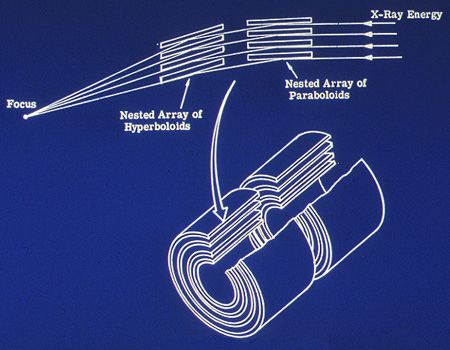grazing-incidence telescope

Schematic of the grazing-incidence telescope used on the Einstein Observatory (HEAO-2). Image credit: Smithsonian Institution.
A grazing-incidence telescope is a type of telescope used in extreme ultraviolet, X-ray, and gamma-ray astronomy, which utilizes the fact that electromagnetic radiation at these very short wavelengths behaves like ordinary light rays providing that it strikes surfaces at a shallow enough angle.
Instead of the conventional bowl of a paraboloid (as used in an ordinary reflecting telescope), the mirror, or mirrors, of a grazing-incidence telescope consists of a ring or array of paraboloids, and in some cases, also of hyperboloids, higher up on the wall of the instrument, so that the incoming rays meet these mirrors at small acute angles and thus are gradually deflected, rather than directly reflected, onto the detector.


